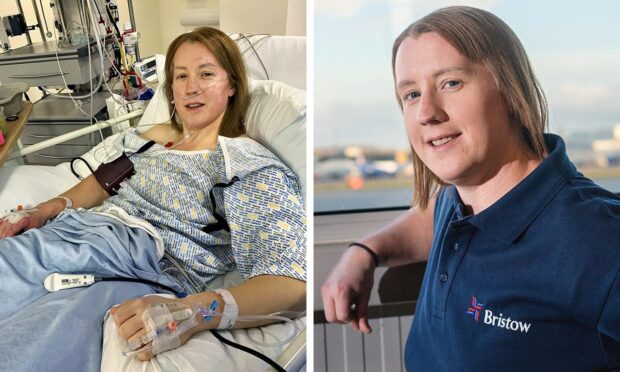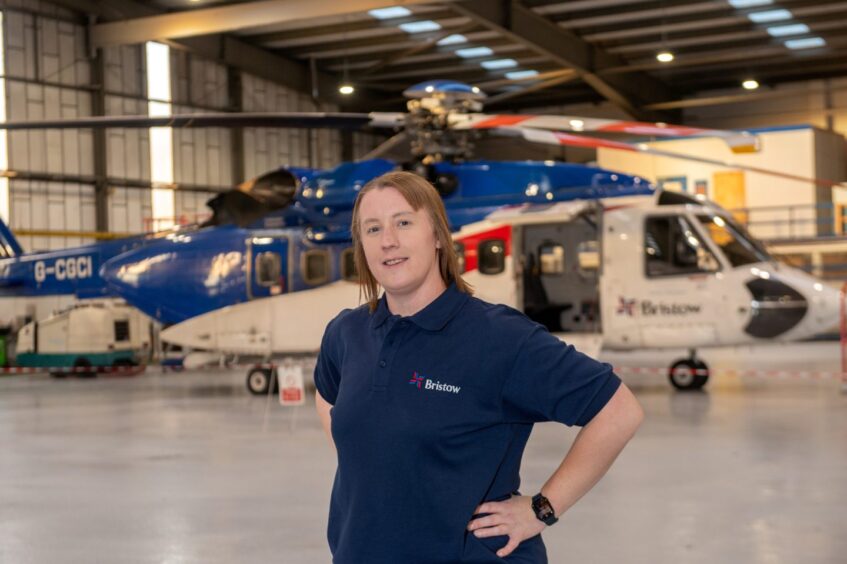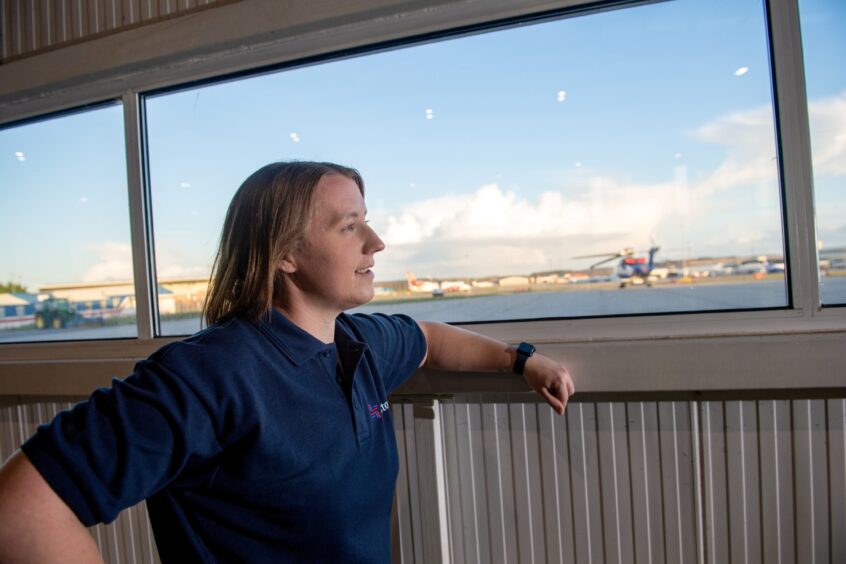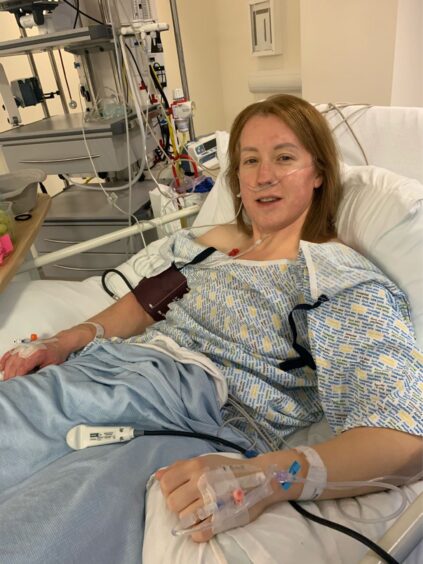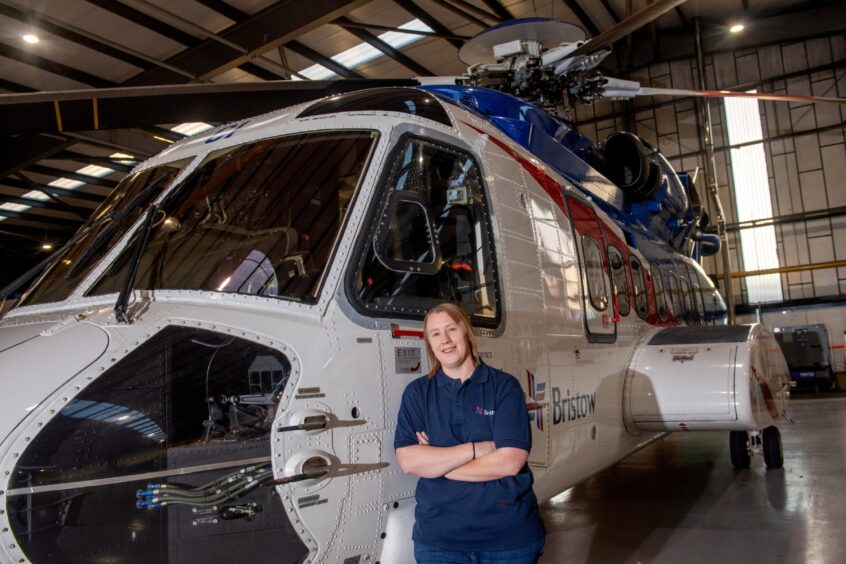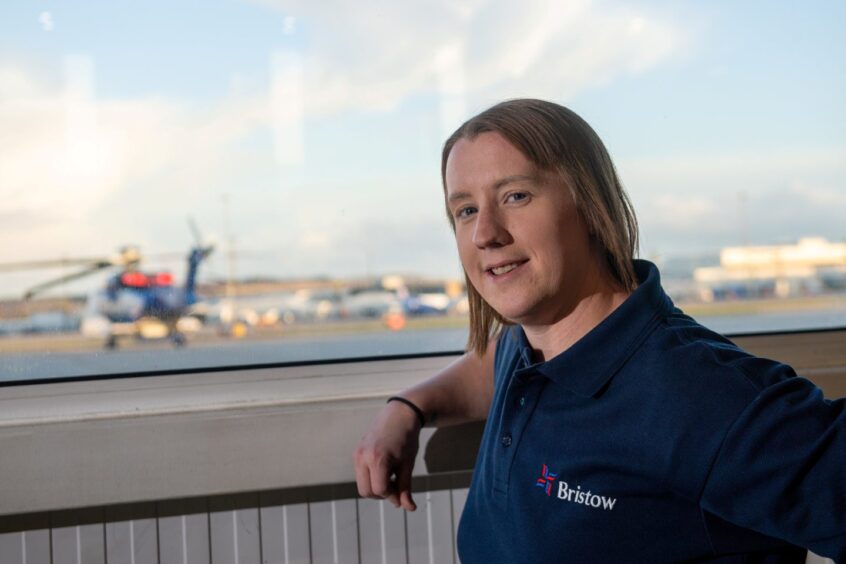Who would you donate a kidney to? A friend? A brother? A parent?
How about a stranger? Would you give up one of your organs to someone you’d never met, someone you were likely to never meet?
Debbie Stewart did. Two years ago the global planning manager for Bristow Helicopters in Kintore underwent surgery so her kidney could be donated to a mystery recipient.
Now she wants you to do the same.
“If someone was drowning,” says Debbie, “you wouldn’t think about whether it was someone you know. You’d try to help them whether you know them or not.”
‘It stuck in my head’: How Debbie found out about altruistic donations
There is no single reason why Debbie donated a kidney to a stranger. Ask her why, and the 34-year-old from Colpy just north of Insch offers up a number of factors.
There’s the great uncle who had kidney disease. She also talks about a desire to ‘pay it forward’ — repaying the help she received a few years ago from a diet coach in getting fit and healthy.
But what it really came down to, she says, was two things.
First, she was feeling good about herself health-wise. Second, she read a news article about something called ‘non-directed altruistic donation’.
“I didn’t realise that you could do that, that you could donate [to someone you didn’t know],” Debbie says.
“Obviously, everyone’s heard of donating to friends and family but I’d never heard of this. It just stuck with me, it stuck in my head.”
Why non-altruistic kidney donation is so important
Debbie did some digging and discovered that non-directed altruistic donation, or NDAD, is a form of donation where a person gives an organ to an unknown recipient.
Last year, there were 83 non-directed altruistic kidney donations in the UK, according to NHS Blood and Transplant, which oversees NDAD in the UK. That compares to the 3,600 total kidney transplants in the country, according to Kidney Research UK.
How it works it slightly complicated, but essentially the donors have their kidneys scanned and tested so they can be matched to a suitable recipient.
The kidneys then become part of a “pool” of donations that also includes organs from people who are donating to someone they know – for example a family member.
What many people don’t realise is that family members often don’t match, meaning a straight transplant can’t go ahead.
The NDAD donors, therefore, help kickstart a chain effect. The family member’s kidney doesn’t go to their loved one, but the transplant can still go ahead because a NDAD one does match.
The family member’s kidney then goes elsewhere, thus saving another life.
Why not everyone is suitable to be an altruistic donor.
One significant aspect of NDAD, is that the people who do it are not told who got their organ.
“The recipient, if they want to reach out, they can write a letter,” explains Debbie, who was told her transplant was a success but never heard from her match.
Debbie says she is fine with that, though that could be because the NHS only accepts people for NDAD that would be fine with it. The clue is in the name – the donation has to be altruistic.
“There are a lot of people that go forward to be an altruistic donor but get turned away at the psyche evaluation,” Debbie says. “The programme doesn’t want people who might spend their life wondering where a part of them went.”
The long road to donating a kidney
Debbie first tried to donate in 2016, but was told to wait a few years to think about it.
Her second attempt was curtailed by the pandemic, but in November 2021 she was finally matched and taken to Edinburgh Royal Infirmary.
To ensure she knew what she was doing, she’d already been briefed multiple times by doctors on the dangers involved in the surgery.
“They did everything they could to try and dissuade me,” she laughs.
But she admits it was a nervous morning waiting for the go-ahead for surgery.
Finally, she was taken into theatre. Four hours later, she woke up still groggy from the general anesthetic, and minus her left kidney.
‘The most surreal feeling I’ve ever had’
She was surprised how much the operation initially took out of her. The first time she tried to get out of bed she thought she’d be able to make it all the way to the bathroom.
“Oh, no,” she says. “It took a minute to get that stability and that strength.”
She remembers something else, too. Because of the surgery scars she had to sleep on her back. When she was finally able to roll over on to her side, something unusual happened.
“All my organs just fell,” she says. The missing kidney had opened up new spaces in her body, requiring a slight rearrangement.
“No word of a lie,” she adds, “that was the most surreal feeling I’ve ever had.”
Living donors the ‘gold standard’ for kidney donation
Debbie’s employer Bristow Helicopters, which operates oil rig transport and air and sea rescue out of Aberdeen airport, gave her two months off to recover from the surgery.
Six weeks into that she was almost back to normal, though there was some pain when she used her abdomen. But it didn’t stop her from getting back on her exercise bike.
“That was my biggest worry actually, how long it would take me to get back into fitness,” she says. “I probably went back sooner than I should have. But I was alright.”
Her recovery was helped by the plaudits she got hospital staff.
NDAD, says Debbie, is not very well known, so medical staff were overjoyed when they met someone doing it.
That’s because kidneys donated by live donors such as Debbie have a much better chance of a successful transplant compared to those from people who have agreed to donate after their death.
“Living donors are your gold standard [for kidney transplants],” says Debbie.
Meanwhile, demand for kidney transplants outstrips supply; last year, 439 patients died while waiting for a transplant, according to NHS Blood and Transplant.
The only alternative is dialysis, a time-consuming process that needs to be carried out up to six days a week.
Living with the effects of kidney donation
As a living donor herself, Debbie spends as much time as she can advocating for it.
Going through the process taught her so much about transplants, for example that a match between family members is often not possible because the antibodies don’t line up.
And of course she also learned about what it means to go through life with one kidney, something she is asked about a lot.
“You have a risk with your remaining kidney,” she admits. “But if it does fail you do get put to the top of the transplant list.”
There is another question she gets asked more — can she get her kidney back if she needs it later in life?
Debbie laughs and says no. But she’s fine with that. Her only regret is that she has no more kidneys to give.
“If I could do it again, I would,” she says.
If you want to follow in Debbie’s footsteps and become an altruistic donor, the NHS provides information here, here and here.
